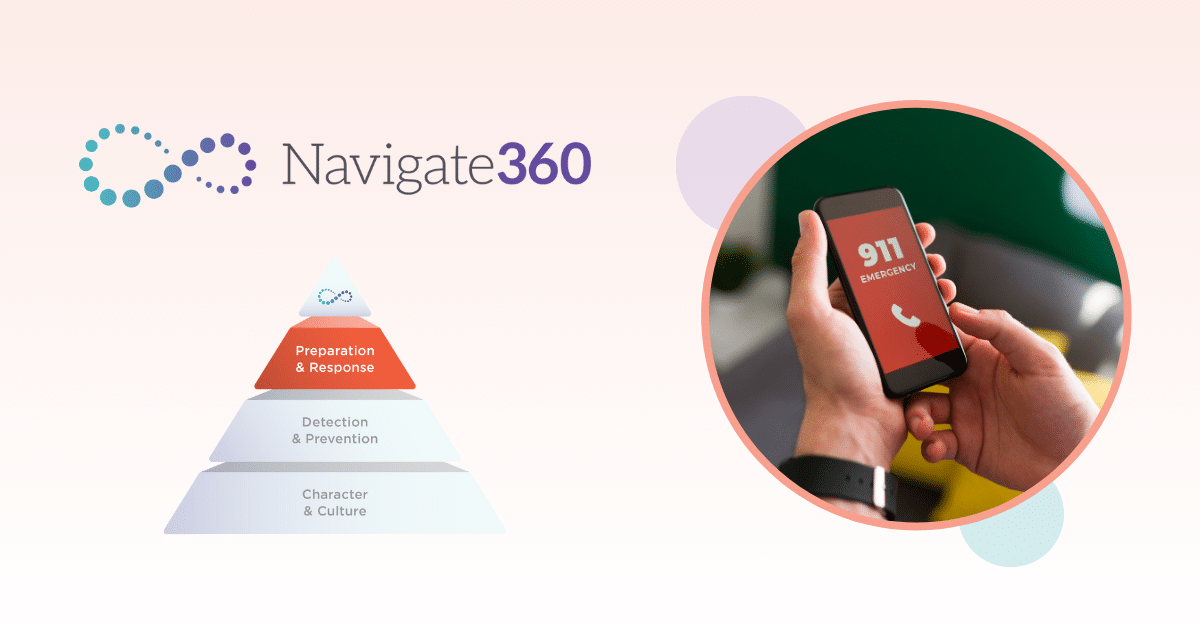How ALICE’s trauma-informed, blended approach empowers people to survive in the face of violence
Active assailant events in school are not easy or comfortable to consider, but it’s an unfortunate reality of our society today. As the world changes, schools must also evolve in the way they respond. Since the 1980s, the traditional lockdown has been the most common approach to active assailant response training in schools. Originally adapted from a response to drive-by shooting drills, the traditional lockdown approach wasn’t designed for the sophisticated active assailant threats and events we’re seeing today. It doesn’t address the individualized nature of the event and limits people to respond in a passive way. It’s also proven through peer-reviewed research to be less effective than the multi-option response approach.
But there aren’t just differences between the traditional lockdown and multi-option response; different multi-option response programs vary in approach, method of delivery, and content. School personnel must also assess and determine the best multi-option response solution to keep their schools safe.
Why Traditional Lockdown Fails
The traditional lockdown approach to active assailant events has been used in districts around the country since the 1980s, when it was originally created to protect students and staff from drive-by shootings in the Los Angeles Unified School District. The lockdown method instructs individuals to stay inside classrooms, huddling in corners of their darkened and locked classrooms. This method was designed to keep people away from windows and allow the building’s exterior walls to protect them from bullets but no longer accommodates all of today’s active assailant threats.
While the lockdown approach set a standard for a plan and response to keep students safe should a violent event occur, we have seen a lockdown-only response fail tragically, time and time again. During the Columbine High School shooting in 1999, lockdown failed because not everyone was able to access a classroom – some students and staff were in large open areas like outdoors, the library, and the cafeteria when the attack began. The Sandy Hook Elementary School shooting in 2012 showed a building can be breached when the assailant avoided the locked doors by shooting out the window next to the front door to gain entry. In the 2005 Red Lake, Minnesota school shooting, the assailant avoided the locked door and shot out the windows next to the door to enter the classroom.
Unfortunately, active assailants always plan the time, the place, and the victims ahead of an attack. They know there are people in darkened, closed rooms and that they are likely hiding in a corner, on the floor, in a group, and staying immobile and silent. A weakness of the lockdown-only response is that it doesn’t account for the variety of scenarios that may occur during a violent event, and it doesn’t empower individuals to take control of their own survival when lockdown does not apply.
Why Multi-Option Response is More Effective
Fortunately, there’s another, more effective approach to preparing staff and students for responding to an active assailant threat: the multi-option response. The multi-option response approach recognizes the dynamic, evolving nature of the event. While the multi-option response includes the lockdown response, it enhances the tactic with a barricade. It also offers options for other, more active responses like evacuation when possible, and countering the attacker as a last resort.
While no response can guarantee everyone will survive an active assailant event, recent peer-reviewed research shows significant statistical differences between traditional lockdown and multi-optioned response.
A 2018 study shows that multi-option response drills were found to end more quickly and result in fewer people being shot compared to traditional lockdown drills:
- In a classroom setting, the average number of participants shot decreased roughly 50% versus traditional lockdown drills
- In large open areas such as the library or hallway, the use of multi-option response (ALICE) options resulted in a 58% drop of those shot when compared to using traditional lockdown response
Further supporting the evidence, all U.S. federal and state agencies—from the U.S. Department of Homeland Security to the U.S. Department of Education— recommend practices that utilize a multi-option response, as reported by the Journal of School Violence.
What Sets ALICE Apart from Other Multi-Option Response Programs
Once school safety personnel make the decision to implement and train the multi-option response approach instead of the traditional lockdown, it’s time to determine which multi-option program will best protect the safety of their schools. But what are the differences between Navigate360’s ALICE Training ® – the original, civilian multi-option active shooter response training – and other multi-option response programs?
Empowerment Over Fear
ALICE Training emphasizes the empowerment and control individuals should have in their own survival in the face of violence. It recognizes that active assailant events are unique and chaotic – there shouldn’t be a one-size-fits-all response. Scholarly research that compared ALICE with Run-Hide-Fight showed teachers from the schools that participated in ALICE Training ® felt a sense of empowerment, while teachers from the schools that participated in Run-Hide-Fight training felt anxious. Additionally, ALICE Training ® participant schools noted a culture of safety and wellbeing following the training. From the ALICE participant schools, the study notes: “Giving teachers options triggered their right to survive. More than one participant expressed the sense of being empowered to take action and protect students.”
Blended Learning
Today’s world is more virtual than it ever has been, and staff and students alike are adapting to new ways of teaching and learning. ALICE’s blended approach to training incorporates both in-person, hands-on, certified instructor-led training, and a digital eLearning curriculum. Each type of training delivery reinforces lessons taught in the other for better knowledge retainment and recall. This blended model of both online lessons and in-person training for active shooter response is a key difference from other options-based programs; participants’ comprehension of the program promotes a more fluid recall during a real-life emergency. Further support for this approach comes from the Department of Education, which recommends a blended approach to learning to increase retention and recall.
ALICE’s engaging and interactive eLearning ensures each of your participants has access to the foundations of the ALICE Training ® program and upon successful completion, a certificate is issued letting leadership know that they understood the ALICE response options.
Ongoing Evolution with a Trauma-informed Approach
ALICE was developed by Greg Crane in 2000 and used the lessons from a response model from fire services created over a century before: no one response is appropriate for all incidents. Now in 2021, with 20 years of lessons learned, Navigate360’s ALICE Training ® is continuing to evolve to meet the safety needs of schools today. One of the ways ALICE is evolving is through a trauma-informed approach. At Navigate360, we recognize the importance of using trauma-informed practices in safety training in schools – one in four children has been exposed to trauma that may affect his or her behavior. ALICE Training ® approximates the conditions faced during an actual active assailant event without needlessly causing trauma, fear, or injury to the participants.
To stay ahead of the safety needs districts are facing today, ALICE Training ® is also emphasizing training efficacy and consistency with ongoing support for ALICE Certified Instructors to ensure the focus remains on the ability for civilians to prepare for and respond when they become unwilling participants in an act of violence.
Empower and Prepare Your Students and Staff with ALICE Training ®
School safety is – and always will be – a priority for administrators and personnel. But getting ahead of today’s evolving safety risks is a daunting task for busy school personnel. The cost of school safety done wrong could be ruined reputations and most importantly – lives lost.
Provided by trained professionals who have been in your shoes, Navigate360 is here to help. Through age- and ability-appropriate, blended training that focuses on implementing using trauma-informed practices, ALICE Training ® provides the education and training to empower students and staff to respond and survive in the face of violence. The strategies students and staff learn in ALICE Training ® are life skills that can be used by anyone, anywhere, at any time – beyond the classroom. Reach out to us today to learn more.




